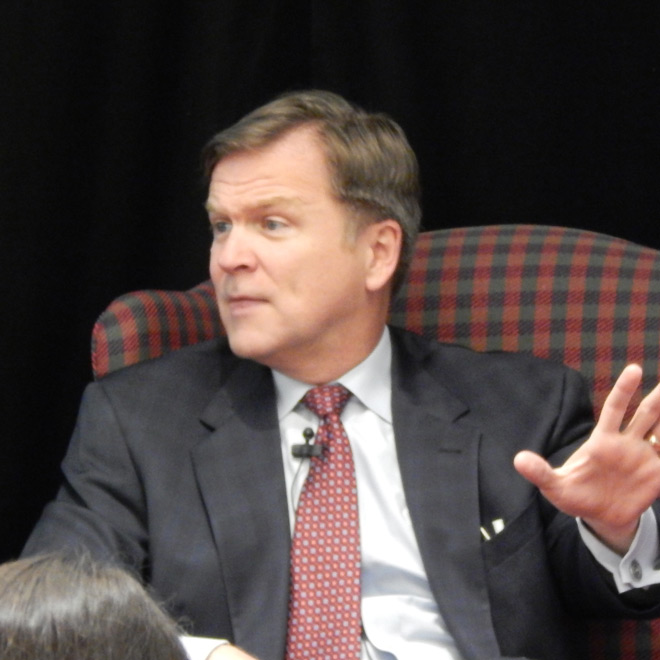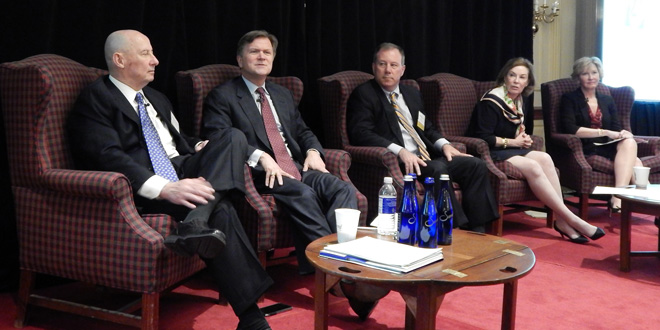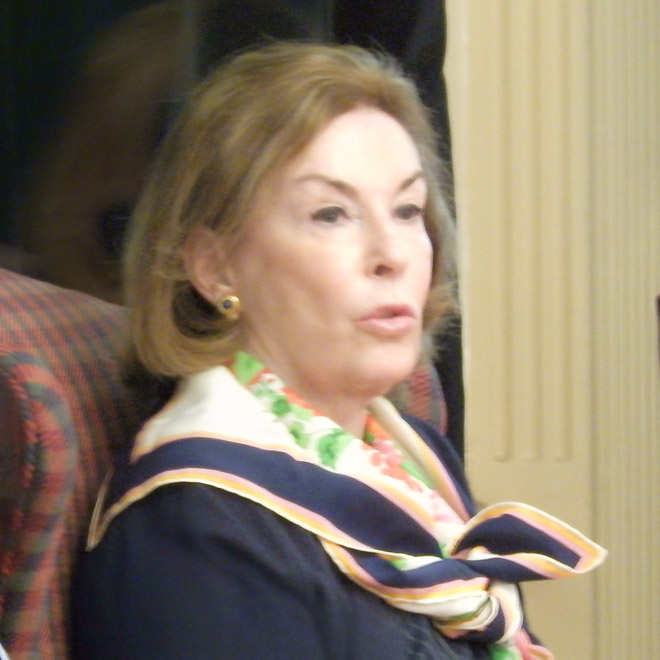By William Opalka
ALBANY, N.Y. — Four former energy regulators who were in the middle of many of the electric industry’s watershed events of the past two decades reminisced — and expressed regrets for paths not chosen — at the Independent Power Producers of New York spring conference Wednesday.
Former Federal Energy Regulatory Commissioners William Massey (1993–2003), Nora Mead Brownell (2001–2006), Suedeen Kelly (2003–2009) and former chairman Pat Wood (2001-2005) expressed pride in the growth of wholesale competition and wistfulness over political compromises that prevented development of larger, more uniform markets.
In a later session, NYISO CEO Stephen Whitley (2008–present) and predecessors William Museler (1999–2005) and Mark Lynch (2005–2008) also shared war stories from the first 15 years of the ISO’s markets.
Open Access

Massey voted in 1996 for the landmark Order 888, which ordered transmission operators to open their lines to competition.
“We knew we would get pushback with everything we did, but if you’re going to be a regulator or run an RTO, you’ve got to have political courage,” said Massey, counsel to the COMPETE coalition, which represents more than 700 stakeholders in support of electricity competition.
And political courage failed him at the most crucial time, Massey admitted, recalling the California energy crisis of 2000-2001, which occurred after FERC’s misgivings about the poorly designed California market were cast aside.
Massey related how the 1996 utility restructuring law passed the California legislature unanimously. The entire California congressional delegation then wrote to FERC, saying that any tinkering by the agency would likely cause the plan to collapse “like a house of cards.”
FERC meekly went along. “We had the opportunity to vote yes or no,” Massey said. “That is the vote I’m most sorry about.”
California’s wholesale power market and customer-choice program began in 1998 and seemed to be working well until the summer of 2000, when electricity prices in southern California hit all-time highs, and generation shortages caused rolling blackouts in northern California. Escalating wholesale prices, combined with retail price caps, put the state’s three major investor-owned utilities in a vise, with Pacific Gas & Electric forced to declare bankruptcy.
In December 2000, FERC eliminated the requirement that the three IOUs purchase their power through the California Power Exchange. In June 2001, shortly after Wood and Brownell joined the commission, FERC expanded a price mitigation and market monitoring plan it had issued in April 2001.
The California price spikes and Enron’s implosion stopped restructuring dead in its tracks as a national policy, Wood recalled. “Years later we were still putting the pieces back together,” he said.
Wood, now chairman of the Dynegy Board of Directors, said the industry is still coping with the lessons from the California crisis, including the balancing of consumer interests and industry needs. “If you want to be an economic regulator, you’ve got to understand the economics [and] what it takes to incent investment,” he said.
What he most seemed to regret was how proposals to divide the country into four RTOs — the Northeast, Southeast, Midwest and West — were stymied. The country is still paying for the “balkanization” of the markets caused by the “hue and cry and pushback,” he said.
“I still think there’s a lot of enterprise that could occur between New York and New England. And the seams issues between PJM and MISO are just awful,” he said.
Former NYISO CEO Lynch said the vision of a larger, seamless market in the Eastern Interconnection is unlikely to be realized. “We may have missed our opportunity to get there,” he said.
Kelly, who worked on legislation to make restructured markets national policy as a Senate staffer before her FERC tenure, said its failure informed her tenure as a regulator. “Political courage is important, but even more important is political support,” she said. Kelly added that energy policy is one place where partisanship can melt away and consensus built.
But Brownell and NYISO CEO Whitley said that consensus-building can be unwieldy — “herding cats,” Whitley called it.
“I think the stakeholder process has grown into a cottage industry,” Brownell said. “I have great respect for the work they do, but I can’t imagine the New York Stock Exchange being developed by 400 people over a three-year period. We need to focus on the larger picture,” she said.
The larger picture, Brownell said, is electric markets’ role in developing the economy. “Where we begin to redefine this industry as economic development, we’ll move away from state versus federal [jurisdiction]. This is really about our competitive position in the world and social well-being.”

